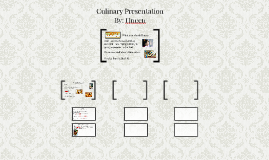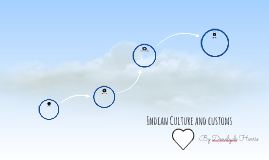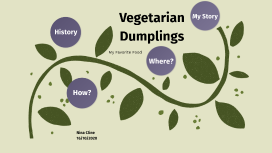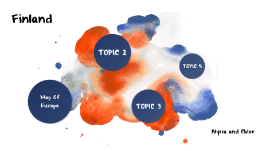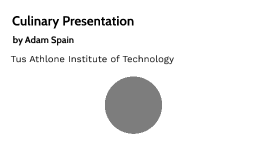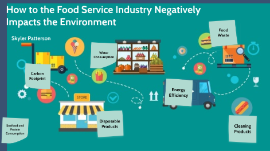Culinary Presentation
Transcript: WHEn HOW Riki Taylor WHY L's Bistro Menu L’s Fall Harvest Small Plates Winter Squash Bisque $7 Fig and Cheese Plate $11 Charcuterie and Cheese Plate $15 Fresh Pasta of the Day MP Large Plates Lamb Lollipops $ 28 Roasted lamb served with sautéed fresh greens, roasted roots, and a red wine reduction Ribeye $32 Seared steak accompanied by haricots vert, potato/rutabaga puree Forager’s Plate $18 Purple asparagus and oyster mushrooms tossed in herbed risotto with aged asiago Seabass $30 Poached seabass with asiago risotto and roasted root vegetables Dessert Ask Server for today’s special offerings from Bella Cora Providing a place where you can get to know your food and through the food, get to know your community. We strive to provide a memorable dining experience for you and your loved ones. MIssion Statement MIssion Statement Capacity: 60 Hours: Wednesday - Thursday and Sunday 4pm - 10pm, Friday and Saturday 5pm-11:30pm, Monday and Tuesday CLOSED Uniform: FOH White button down, Balck slacks, dress shoes BOH Grey chefs coat, black chef pants, kitchen shoes Target Market: Health concious and Earth concious consumers between 30 and 50 Concept: Farm to Table Concept: Farm to Table Recipes Roasted Red and Golden Beet Salad Yield: 4 cups Preheat oven 375 Servings: 4 Ingredients: 1 pound red beets (about 3 medium) 1 pound golden beets 2 ½ tablespoons olive oil 1 tablespoon balsamic 1 ½ teaspoons honey ½ teaspoon minced garlic 1/8 pink salt 1/8 teaspoon black pepper 4 cups spinach 2 ounces feta, crumbled Procedure: Rinse beets and spinach. Cut beets into even sections, keeping the red and golden beets separate. Cover with foil bake at 375 for 30 to 45 mins until fork tender. Combine oil, balsamic, honey, garlic, salt, and pepper in a bowl and whisk. Divide into four even portions. For each portion divide in half. In one bowl toss the red beets, in another toss the golden beets. Plate half a cup of spinach, arrange 1 cup of golden and 1 cup of red beets over the spinach, sprinkle 14 grams of feta. Pour any vinaigrette from the tossed beets over the salad. Equipment: Baking sheet Aluminum foil Mixing bowls Whisk Recipe Cards Risotto Yield: 1 cup Servings: 1 Ingredients: ¼ cup Arborio rice 1 small shallot (half a large shallot) 1 tablespoon dry white wine ½ tablespoon olive oil ½ tablespoon butter 1 cup chicken broth 1 clove garlic minced ½ tablespoon thinly chopped chives ¼ cup Asiago and Romano mixture Salt and pepper to taste Variation: ¼ cup Asparagus ¼ cup thinly sliced mushrooms 1 Teaspoon olive oil Procedure: If making variation sauté mushrooms in the teaspoon of olive oil set aside. Blanch asparagus in boiling water then chill in ice bath. Heat ½ tablespoon olive oil and butter in sauté pan over medium heat add minced garlic and shallots. Cook just till shallots are wilted. Add Arborio rice and sauté till golden. Pour in white wine and cook till absorbed. Incorporate the chicken both in ¼ cup increments stirring slowly throughout. Once the rice is al dente season with salt and pepper. Stir in the cheese mixture and chives. If making variation toss in the mushrooms and asparagus. Reserving a piece of each for plating. Squash Bisque Yield: 11 cups Servings: 6 Ingredients: 1 large butternut squash (about 4 lbs) peeled, cleaned, and cubed 1 medium onion chopped 3 tablespoons butter 2 garlic cloves sliced ¼ teaspoon cayenne 2 tablespoons chopped thyme 2 ½ cups vegetable broth 3 tablespoons Port 1 cup half and half Fresh thyme for garnish Greek yoghurt for garnish Procedures: In a large saucepan melt butter and add onions, sauté until translucent. Add cayenne and butternut squash, sauté until brown. Add port and cook about a min till liquid absorbs. Add the vegetable broth and simmer till squash is very tender. Puree the mixture and return to saucepan. Stir in thyme and half and half. Cool and portion for service. Reheat before serving. Garnish each bowl with a dollop of yoghurt and sprig of thyme. HAACP Refrigerated: All ingredients on this list must be stored below 41* until preparation 1 Butternut Squash 1 Onion 3 tb. Butter 2 Garlic Cloves 2 tb Thyme, plus garnish 2 ½ cup Vegetable Broth 1 cup Half and Half Greek Yoghurt SOP1: Upon receipt ensure all produce is in good condition. Make sure dairy is within its expiration date. CCP1: Rinse squash thoroughly before starting recipe. CCP2: Squash should be sautéed to an internal temperature of at least 130*. CCP3: Soup must be cooled to at least 41* within 1 hour, with an ice bath. Store soup in labeled portion containers until served. Squash bisque Dry Storage: All ingredients on this list must be stored in original packing or in a sealed food safe container, at least 6” off the ground ¼ tea. Cayenne 3 tb. Port Refrigerated: All ingredients on this list must be stored below 41* until preparation 1 lb. red beets 1 lb. golden beets ½ tea. Garlic 4 cup spinach 2 oz. Feta SOP1: Upon receipt ensure all produce is in good condition. Make sure dairy is within its expiration






